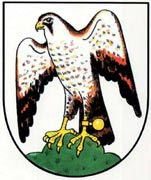YOUR COST BREAKDOWN - just so you know exactly what you are paying for:
My hand-shaped boards start at $475 and go up from there.
Hollow Wood Boards average $1200 - $3500
Keep in mind that most retail shops take a 25% minimum mark-up on the boards you are buying from them!
You automatically save 25% by ordering a board through me or any other local hand-shaper!
If you want me to shape you a board, this is how it works:
1) Look at the blank catalog and choose the blank you want me to make your board out of. Pick one that is as close to the final shape as possible, unless I have specified a specific blank for a specific shape or model.
2) Go buy the blank and bring it to me (or send me the money and I'll pick the blank up at Mitch's in Solana beach for an added fee of $10-$25 to cover my gas and my time).
3) Send me half of the total board price so I can get started on your board (I do 1/2 down deposit and 1/2 remaining balance upon pickup):
Legends Surf Shop
c/o David Falkenau, BS, NREMT-B, FF-EMT, Teacher
2658 State Street
Carlsbad, CA 92008
4) Tell me if you want a Traditional Polyester Resin Glass job by Luiz Masuzzo or Mauricio Avila or a Keahana Epoxy Resin Glass job (see the bottom of this section for Keahana's pricing).
5) I'll contact Luiz Masuzzo or Maurico Avila (my glassers) to confirm your price, and will get back to you to confirm... same process if it is done at Keahana... I will just have to confirm with Raul Espinosa, and then give you a call.
6) Once we (you and I) dial in all the details I will shape your board and send it off to the glasser.
7) When your board is complete, you can pick it up at my shop or at Legends, and you can pay me the remaining balance (1/2 of the total price). If your board requires shipping, you are responsible for any added costs that go into the packaging, insurance, shipping, and handling of your new board... your choice of carrier!
BLANKS:
I use U.S. Blanks exclusively!
Click here to see the catalog!
The Prices quoted are from Mitch's in Solana Beach!
Contact them for blank pricing:
Mitch's Solana Beach
363 North Hwy 101
Solana Beach, CA 92075
858-481-1354
SHAPING:
While considering my Shaping Fee, keep in mind, I put my heart, sweat, and soul into the shaping of your board. It is a passion and a love affair between my desire to design and build a work of functional art, my eyes, my planer, my hands, and the blank. I am a proponent of the Great American Dream... so help keep this dream alive and please don't ask me for a "Bro-deal".
$190-$266... 0’0” up to 6’11”
$267-$342... 7’0” up to 8’11”
$343-$380... 9’0” up to 9’11”
$381-$418... 10’0” up to 10’11”
$418-456... 11’0” up to 11’11”
$457-$494... 12’0” up to 12’11”
$495-$532... 13’0” up to 13’11”
Glassing:
Up to 6’11”………………………………………$200
7’0” to 7’11”……………………………………$225
8’0” to 8’11”……………………………………$250
9’0” to 9’11”……………………………………$275
10’0” to 10’11”…………………………………$300
11’0” to 11’11”…………………………………$325
12’0” to 12’11”…………………………………$350
13’0” to 13’11”…………………………………$375
Base Glassing Price (above) Includes:
1) Lamination with “E” or “D” cloth (1 layer 4 or 6 oz. bottom and 2 layer 4 or 6 oz. deck
2) Logos
3) Hot Coat
4) Sanded Hot Coat Finish
5) Leash Plug; or Leash Loop; or ½ Moon Cut Fin Panel Glass-on Leash Attachment
6) Fin Systems: FCS (fins included) $20 add on cost for BASIC stock fins
Future Fins (fins included) $20 add on cost for BASIC stock fins
Lok Box (fins included) $20 add on cost for BASIC stock fins
$10-$25 added Cost for 8” Single Box; 10.5” box or Stinger Box!
2+1 Combo (add $25)
Quads (add $40)
C5 (add $40 - $50 depending on brand and set-up)
Glass-ons ($10 - $50)
*Carbon Fiber Fins, Fiberglass fins, Longboard Center Fins and Special Order Fins are an extra cost per quote.
Glassing Alternative Options:
7.5 oz. – 10 oz. Volan (add $30 per side)
“S” cloth ($5 per yard) or ($15 per layer under 7’ and $25 per layer over 7’)
Fee for Glassing Channels and difficult contours (add $25 each)
Epoxy is additional (based on board length and epoxy brand)
Color Options:
Airbrush ($20 minimum, contingent upon specific work, priced per quote)
Tints & Pigments:
$35 for basic coloring per side up to 7’11” and $60 for 8’0” +
$45 for abstracts / acid splash / swirls per side up to 7’11” and $65 for 8’0” +
Inlay color on deck or bottom ($30)
Pin Lines ($25 on up depending on amount detail)
Finish Options:
Acrylic Finish ($10)
Polished Acrylic ($25)
Sanded Gloss
$35 - $45 under 8’0”
$50 over 8’0”
Gloss & Polish
$45 - $55 for boards under 8’0”
$60 for boards 8’0” up to 10’0”
ADD $5 per 6” over 10’
California Residents add 7.75% sales tax to your overall board cost! I shape under Warner Enterprises / Legends Surf Shop's license.
As of October 2009, my polyester boards are glassed by Luis Masuzzo at M&M, in Oceanside!!!!!!!
I also use KEAHANA Triaxial EPS Epoxy Systems if you want EPOXY:
- Shortboard Epoxy Glass Job... $300
(Keahana Blank & Glass Job...$375)
- Fun boards and boards up to 8'0"... $375
(Keahana Blank & Glass Job...$475)
- Longboards and boards up to 10'0"... $450
(Keahana Blank & Glass Job...$575)
All Keahana boards are priced with hot coat and gloss.

























































































